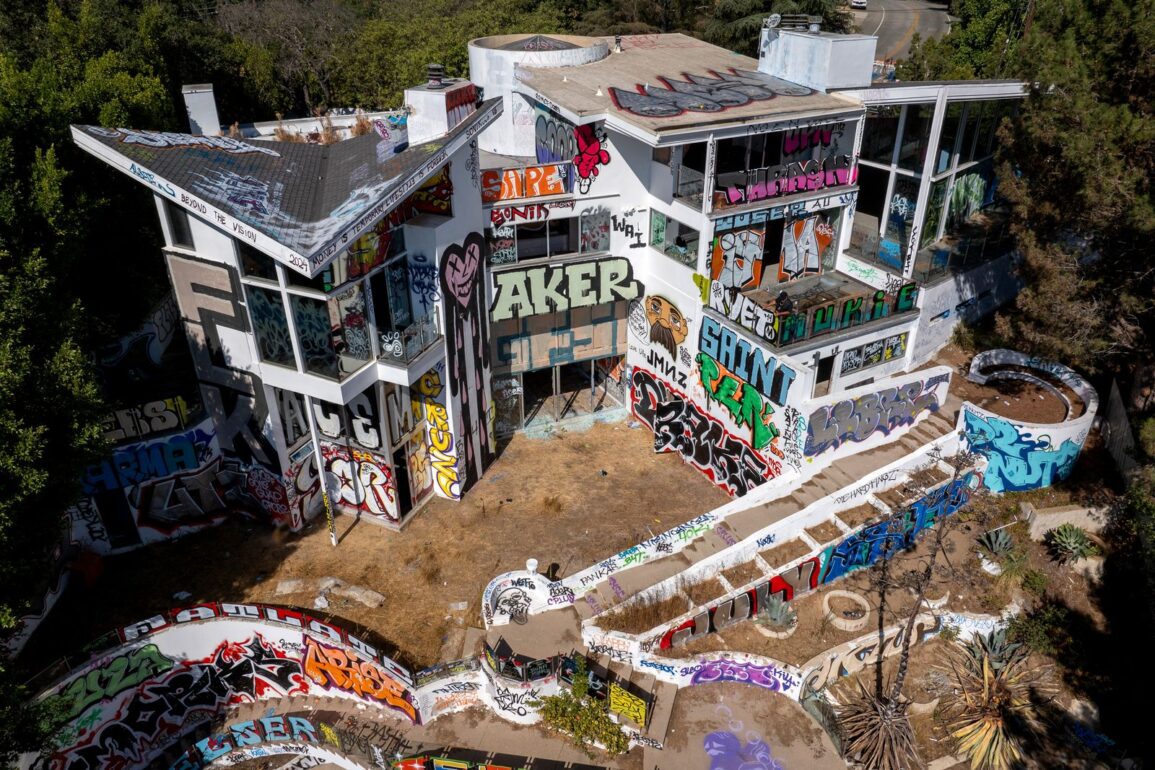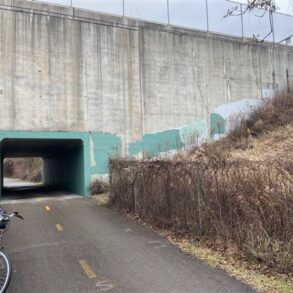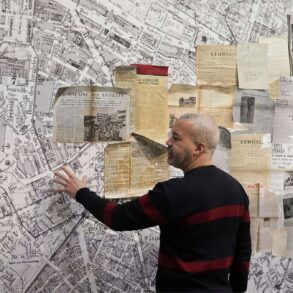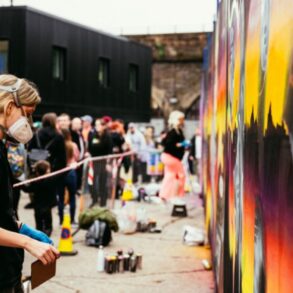The Oceanwide Plaza complex, a $1.2 billion ultraluxury development in Los Angeles, if built to completion would have included three towers—a hotel with residences, and two 40-story residential towers containing nearly 500 condominiums—located right across the street from the city’s downtown convention center. In 2019, when the Beijing-based developer Oceanwide Holdings Co. axed their involvement, the construction site went dormant, save for a few guests in the spring 2024: as the site’s three towers languished, graffiti artists (“taggers”) took to making it their own. Across all three of the 40-plus-story buildings, they scrawled their tags, some as tall as 12 stories.
But it didn’t stop there: In September, three single-family mansions across the city’s wealthy enclaves were reported to be covered in graffiti—some with similar tags. The first two, both located about five miles apart in the Hollywood Hills, are owned by film producer John Powers Middleton. On Mulholland Drive, neighbors told CBS that the house had been vacant for years and was hosting squatters; NBC reported that the second Middleton home on Sunset Plaza Drive, which was for sale at $21.5 million, had been cited for vacancy and abandonment eight times since 2022 before media outlets took notice of the vandalism. Shortly after, reads another CBS story, a third mansion in Lower Bel Air partially owned by Osama bin Laden’s half-brother was “nearly covered in spray paint at every square inch.”
These are two different scenarios: both are financial failures, yet at first glance, one might reveal the problems of offshore investors, and the other simply a local nuisance. Maybe it was some type of schadenfreude but, especially in the case of the Oceanwide towers, the internet took great delight. The glitzy Oceanwide project that critic and Dwell contributor Mimi Zeiger called “another entry in the junkspace haze of supermodernism”—a reference to Rem Koolhaas’s tirade about the death of architecture—became “a collective resistance to the banal aesthetics of market-rate capitalism” after being graffiti bombed. Yet as graffiti pops up in neighborhoods where highly desirable single-family homes sit empty during a massive housing crisis, graffiti, so often depicted as evidence of decay, points to our country’s limited access to basic human dignity through housing. Vacancy becomes about excess, not deprivation.
It’s nothing particularly novel; graffiti has historically contested the idea of ownership and belonging. Ismael Illescas, a scholar and professor of Ethnic Studies at Chabot College, documented Southern California’s history of “street writing” in his dissertation, “Between Art and Crime: Graffiti and Street Art in Neoliberal Los Angeles,” noting that some of the earliest street writing in the 20th century came from predominantly Mexican American youth; in the 1930s, those working as shoe shiners “marked their territory by drawing their names on the walls where they worked in East Los Angeles.” Through his ethnographic and historical research, his work asserts that graffiti became a way for young Black and Latinx artists—those he says are, “marginalized, ostracized, and invisibilized”—to “assert their dignity” when upward social mobility is limited.
Dignity has also been a critical point when addressing housing shortages. In L.A., Realtor.com reports that the median home price is currently $1.2 million; a 2023 report by The Angeleno Project shows that the city is short 270,000 affordable units. Perhaps the anticipated 500-plus Oceanwide condos—a project that came with zero affordable units—called attention to the dignity gap inherent in housing today. L.A. critic Carolina Miranda told Scripps News that the subsequent tagging “draw[s] attention not just to the fact that the building is abandoned, but everything in the system that led it to be abandoned.” Here, I assume that she’s not just addressing the developer’s financial woes, but the development ecosystem at large. Building more housing is a net good, until that housing is inaccessible for even those with a median income, which in L.A. was clocked at $79,700 in 2023. At Oceanwide, not even a jaded trickle-down ethos could yield confidence in a bloated project.
So when the graffiti bombs spread months later to L.A.’s wealthy, residential neighborhoods, it was surprising—only insofar as that vacancy took on new meaning. For those who occupy neighborhoods that have histories of urban renewal property razing or postindustrial neglect, vacancy is a residue of disinvestment, the result of resource extraction and systematized impoverishment. In these places, blight, which has been characterized as everything from trash overflows to graffiti to buildings in bad shape, becomes a moniker for racialized poverty.
But the problem of vacancy looks different in these L.A. neighborhoods. The Vacancy Report, assembled by the Alliance for Californians for Community Empowerment (ACCE), reports that there were 93,000 units sitting vacant in 2017; 46,400 vacant units are not on the market and are being used as investment properties, vacation homes, or are otherwise being held off the market while owners wait for property values to rise. Real policy solutions for the problem of speculative investments exist, like vacancy taxes which can collect funds for affordable housing by taxing such vacation and investment properties. But unlike vacancy under disinvestment that yields large-scale dilapidation, vacancy created by excess wealth flies under the radar, hiding amongst maintained mansions and glassy towers. For these three private mansions, excess is the blight—the graffiti just pointed it out.
It’s an exciting evolution for graffiti itself as the art form morphs from claiming the right to space to asserting the right to housing, teasing out the ironies and injustices of our current market. These private homes will surely someday sell—the Oceanwide towers are for sale (for an undisclosed amount)—but whoever picks up the properties might do so with an understanding that wealth can create its own problems. Perhaps less fan-crazed than Luigi Mangione’s one-trick move for class warfare (and far less violent), the art of tagging is in this moment symbolizes the widening gap between the rich and poor, the need for dignified housing, and the problems of speculation, all with style.
Top photo of an abandoned mansion in Hollywood covered in graffiti by David McNew/Getty Images
Related Reading:
This post was originally published on this site be sure to check out more of their content.










